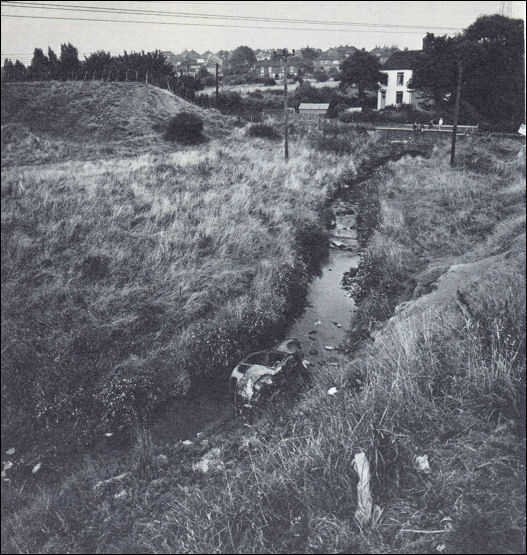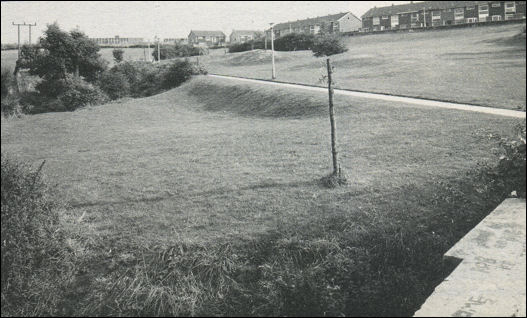|
The background to housing development
in Stoke-on-Trent....
"If the 1930s had been the years of desperate depression, the
later 1940s, after the war had been won, were the years of
severe shortage. Surprising as it may seem now, food rationing
did not end until July, 1954, but if other materials and
commodities did not take quite so long to return to something
like normal supply, the immediate post-war period had to pay
the penalty of six long years of bitter struggle at the end of
which the national cupboard had been swept as clean as a
clinic. Everything was in short supply and most things were in
short supply for a long time.
Stoke-on-Trent had been lucky. Structural damage from
air-raids had been minimal but that notwithstanding, the
problems facing the council were enormous. Since
amalgamation in 1910 there had been two world wars and more
than a decade of depression. Several parts of the city still
displayed a Dickensian dinginess. Even as late as 1951 there
were more than 900 households in the city without a piped
water supply. Houses which were really not fit for human
habitation in the middle of the 20th century and which
should have been bulldozed out of existence years before,
could not be demolished until new ones had been built. The
first and most crippling shortage after the war was houses.
The housing committee of the council faced a truly
monumental task with undaunted vigour. They accepted the
challenge of lifting the city out of the last century and
rehousing the people in pleasant homes in suburban
surroundings. But large and far-sighted as were the measures
of the housing committee, they could not be implemented
overnight. The housing shortage was to be with us for along
time. In 1951 an advertisement in the "Evening Sentinel" for a
two-bedroomed house to let produced 874 inquiries.
One of the housing committee's first actions after the war
was in the construction of emergency, prefabricated houses or
prefabs as they came to be known. They were pint-sized but
they were homes and happy homes for a lot of people who had
hitherto known no place of their own. They mushroomed-up in
mini-estates with an expected life often years. Many of them
had perforce, to be pressed into service for much longer.
The council's housing record since the war has been quite
outstanding, not only in the number of houses completed but in
the manner in which whole new estates have been laid out.
A study of the year-by-year record of house building from
1921 to 1973 will readily explain why the council is so proud
of its achievements in this field. It now owns no less than
30,500 dwellings out of the 96,500 known to be occupied
throughout the city.
Since the end of the war, after a modest start in 1945, the
record has been even more impressive. From 1945 to the end of
November, 1973, a total of 34,799 houses were built in the
city of which 23,025 were built by the city council and 11,774
by private developers."
"Stoke-on-Trent County Borough Council
1910-1974"
|

Bentilee valley before reclamation

Bentilee valley after reclamation and housing development
The Day the Rains
Came Down
Article by Elsie
Procter
"In the 1970s the area that is now
known as the Bentilee Valley was a large expanse of waste ground
where people dumped their rubbish, but with the help of government
grants, the City Council, and interested local residents a plan was
drawn up to convert the land into a landscapes area, with trees,
walkways, playgrounds, bridges, seats, etc. When it was completed,
it was a wonderful sight!
There is a brook
that runs length of the valley, which has its source somewhere
around Hulme, up in the sandhills. Normally a trickle, it can become
a torrent when it rains heavily. Where the nursery now is, on the
corner of Chelmsford Drive and Beverley, the brook runs through
steep banks and sometimes gets flooded.
One day, in the summer, we had the
mother and father of all thunder storms; the brook filled up and
filled up and spread out until we had a lake; it was quite
impressive!
The rain stopped, the sun came
out and so did the kids. They came from everywhere, carrying
makeshift boats in the form of baby baths, tin baths and hastily
constructed rafts of all kinds, and descended on the lake with
great glee. They used their hands as oars and were soon sculling
around. Those without boats put their swimwear on and paddled
about in the shallow parts. There was lots of laughter, shouting
and splashing; they certainly enjoyed themselves.
Mums and dads came out to watch,
and we stood around chatting and watching the kids, calling "Be
careful!" now and again, and drinking cups of tea.
After a hour or two, the flood
subsided, the kids came out of the water, picked up their boats and
vanished as quickly as they'd appeared, and all was quiet again.
My own kids came home bedraggled,
muddy but thoroughly happy, to be bathed, dried, and fed. Then,
thoroughly tired out from their rowing, they fell asleep.
What a wonderful afternoon that
was! Completely spontaneous, it was one of those golden moments in
time that you recall now and then with great fondness. Something
never forgotten. I lived in Chelmsford Drive for 26 years and never
saw it happen again, but I will treasure the memory of it: the day
that the rains came down."
Note: Elsie Procter, as
well as once living on Chelmsford Drive, was involved with "UBB",
the magazine published by the Bentilee Valley Project, which was set
up to campaign
for the cleaning up of the brook area.

|
![]()
![]()
![]()